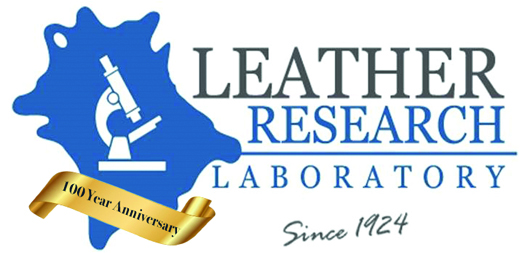BAN ON LEAD
LEAD (Pb) PIGMENTS
The widely publicized shock presence of lead in toys raises various questions, including:
- Why is lead still found in consumer products?
- Can lead be found in leather?
- What regulations apply?
- How are products tested for the presence of lead?
- What other test methods are there?
- What action should you take?
WHAT REGULATIONS APPLY?
The U.S. Consumer Product Safety Improvement Act (CPSIA) of 2008 sets stringent new limits on the content of lead in paint and material substrates for products intended for children.
CAN LEAD BE FOUND IN LEATHER?
Absolutely! A large number of tests performed at the Leather Research Laboratory have shown high levels of lead in various types of leather, including upholstery leather.
You might ask: does YOUR leather contain lead? Quite possibly! Our testing has shown very high concentrations in lead from leather manufactured in Europe too – not just China. At least one well known, reputable European pigment manufacturer has been supplying lead-based pigments to leather manufacturers.
WHY IS LEAD STILL FOUND IN CONSUMER PRODUCTS?
Lead is found in consumer products because it is widely used in the form of lead-based pigments.
Lead-based pigments offer a wide range of benefits for coloring paints and finishes that include:
- stabilization of the formulation
- reduced drying time
- anti-mold properties
- extremely vivid colors
- exceptional covering power
- excellent light-fastness
- low cost
This unique combination of price and performance is a strong selling point, maintaining the presence of lead-based pigments within the manufacturing industry.
HOW ARE PRODUCTS TESTED FOR THE PRESENCE OF LEAD?
In order to assure compliance with US law, the total amount of lead in the product finish must be ascertained. However, there are other test specifications and procedures too. In order to determine the total lead content, leather samples are first converted to ash, and then a test sample is prepared according to:
- NIOSH Method 7082, Lead by Flame AAS. NIOSH (the National Institute for Occupational Safety & Health) is a US government department that specializes in developing official test methods for hazardous substances in the environment.
- ASTM E1645-01 (2007); Standard Practice for Preparation of Dried Paint Samples by Hotplate or Microwave Digestion for Subsequent Analysis. This procedure was evolved from two NIOSH methods (7082, referenced above, and 7105), and an EPA stanadard operating procedure for lead in paint. This is the procedure that we now use.
The prepared sample is analyzed using Atomic Absorption Spectrophotometry (AAS) using certified lead standards. This procedure determines the TOTAL concentration of lead in the leather. The Leather Research Laboratory offers the “insurance policy” of a reliable and authoritative testing program designed to cover both the total lead content analysis as required by US law, and the migration testing preferred in some other geographical regions.
WHAT OTHER TEST METHODS ARE THERE?
Some procedures are designed to measure only the concentration of lead (and other metals) that can migrate out of the product when it comes into contact with perspiration, or when the product is ingested: the proportion that is considered bioavailable. Examples of such tests are:
- ASTM F 963-07; Standard Consumer Safety Specification for Toy Safety
- EN 71-3; European Standard for Safety of Toys
- Similar, proprietary tests (Such as Oeko-Tex 100) that use artificial sweat solution (such as that specified by ISO 105-E04) to extract the sample.
The Leather Research Laboratory performs the above ASTM, EN, and various proprietary migration (bioavailability) tests too. However, the US Federal regulation covers the total concentration of lead in the paint – not the fraction that is able to leach out or migrate under certain specific conditions.
WHAT ACTION SHOULD YOU TAKE?
Leather manufacturers need to confirm that their production is free of lead-based paints by:
- Selecting lead-free pigments for their finishing operations
- Checking the MSDS for all existing stock
- Confirming that production is free of lead by having samples tested
Furniture retailers should independently confirm that lead is free from all types and styles of leather from all vendors by engaging in a robust testing program.
Furniture sold in the US should be tested according to the NISOH/ASTM methods prescribed above. However, some other countries may specify a leaching or migration test, so this should be checked in advance.
Your comprehensive report from the Leather Research Laboratory will explain the full implication of the result and provide practical guidance on any action that might be needed. Contact us to arrange your testing today.




